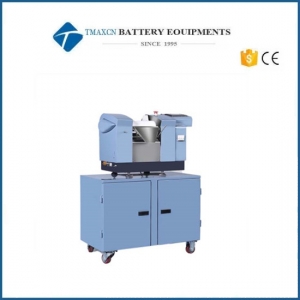products categories
- Battery Production Equipment Line
- Battery Lab Pilot Equipment Line
- Lithium Battery Pack Assembly Line
- Solid State Battery Assembly Line
- Sodium Ion Battery Production Line
- Supercapacitor Assembly Line
- Lithium Ion Battery Recycling Plant
- Dry Electrode Preparation Solution
- Perovskite Based Solar Cell Lab Line
- Li ion Battery Materials
- Cathode Active Materials
- Anode Active Materials
- Customized Battery Electrode
- Coin Cell Parts
- Lithium Chip
- Cylindrical Cell Parts
- Battery Current Collectors
- Battery Conductive Materials
- Electrolyte
- Metal Mesh
- Battery Binder
- Separator and Tape
- Aluminum Laminate Film
- Nickel Strip
- Battery Tabs
- Graphene Materials
- Nickel Felt
- Titanium Fiber Felt
- Battery
- Battery Pack Machine & Compoments
- Battery Pack Compoments
- Turnkey Solutions Battery Pack Assembly Line
- Cell Sorter
- Battery Pack Spot Welder
- Laser Welder
- Battery Charging Discharging Tester
- Battery Pack Aging Machine
- Battery Pack Comprehensive Tester
- CCD Visual Inspector
- Battery Pape Sticking Machine
- BMS Testing Machine
- Al Wire Bonding Machine
- Lithium Battery Machine
- Battery Tester & Analyzer
- Battery Safety Tester
- Battery Material Tester
- Rolling Press Machine
- Spot Welding Machine
- Vacuum Mixer Machine
- Crimping/Disassembling Machine
- Vacuum Sealing Machine
- Electrolyte Filling
- Stacking/Winding Machine
- Electrode Cutter/Slitter
- Pouch Forming Machine
- NMP Solvent Treatment System
- Lithium Battery Production Plant
- Vacuum Glove Box
- Furnaces
- Coaters
- Hydraulic Press
- Ball Mill
- Planetary Centrifugal Mixer
- Laboratory Machine
- Metal Foam
contact us
- If you have questions, please contact us, all questions will be answered
- WhatsApp : +86 13174506016
- Email : David@tmaxcn.com
- Email : Davidtmaxcn@gmail.com
- Add : No. 39, Xinchang Road, Xinyang, Haicang Dist., Xiamen, Fujian, China (Mainland)
-
 SDS80 Lab Electronic Three Roll Mill
SDS80 Lab Electronic Three Roll Mill
DYS Hydraulic three roller mill is a new product which suit for various viscosity material. The cooling effect of this series of machine is triple or more than traditional hydraulic three roller mill, it can make the speed of operation higher, and the maximum speed can reach 800 rpm or more, so that this machine can meet the high shear forces, as well as demand for high productivity. The roller is driven by hydraulic system, and the gap adjustment device with high precision can be customized. This machine adopts PLC man-machine interface control system, which can remotely connect with the ERP. Optional Ball and Jar 1. Material of ball milling tank: stainless steel, agate, corundum, tungsten carbide, nylon, zirconia, polytetrafluoroethylene, lined with polyurethane and so on; The principle of choice is that the material of the ball mill can not affect the appearance of the material to be ground; Grinding easy to oxidation, must be air-insulated materials, you can use vacuum ball mill tank. 2. Grinding ball material are: chrome steel, stainless steel, agate, alumina, zirconia,Selection principle is the grinding ball material on the material to be polished does not affect the appearance of pollution; Grinding ball material density and hardness must be larger than the abrasive material; Ball mill specifications are: Φ5, Φ8, Φ10, Φ15, Φ20 Working principle: TMAX-XQM series of variable frequency planetary ball mill has four ball grinding tanks installed on one turntable. When the turntable rotates, the tank axis makes planetary movements, the balls and samples inside the tanks are impacted strongly in high speed movement, and samples are eventually ground into powder. Various kinds of different materials can be grinding and mixing by the mill with dry or wet method. The size of ground powder can be reduced to as small as 0.1 micrometer.
 ru
ru
 Iris@tmaxcn.com
Iris@tmaxcn.com David@tmaxcn.com
David@tmaxcn.com +86 13174506016
+86 13174506016 18659217588
18659217588